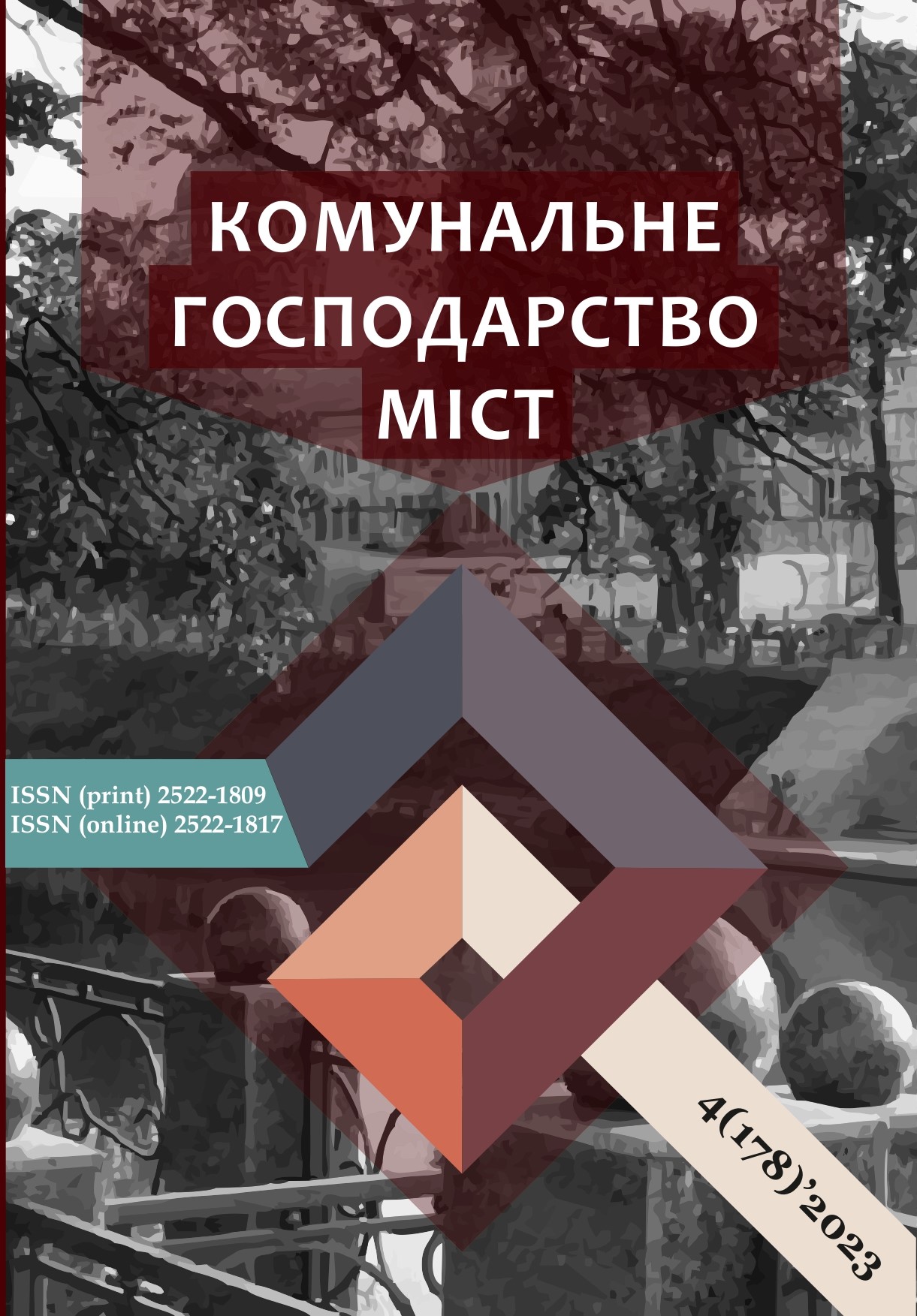GEOINFORMATION MODEL OF THE TRANSPORT NETWORK
DOI:
https://doi.org/10.33042/2522-1809-2023-4-178-141-146Keywords:
transport network, geoinformation system, modeling, route optimization, shortest distanceAbstract
The article presents a geo-informational model of the transport network of the Lozovsky district of the Kharkiv region. An analysis of the modeling object was carried out and it was determined that the transport system of the Lozovsky district contains two main components - a network of railway tracks and a network of highways. There are also waterways, but they are not suitable for transportation tasks. At the same time, geoinformation technologies, by their purpose, have descriptive and analytical functions that allow modeling and analysis of any objects. The Internet resource Open Street Map was selected as a data source for spatial modeling of the transport system of the Lozovsky district. This resource contains detailed and free information, access to Open Street Map data in geoinformation format integrated with QGIS software. Therefore, this software product was used as a modeling tool. Using the modules of the software tool selected for modeling, the following layers of the model were created: "District boundaries", "Roads", "Railway", "Railway stations", "Waterways" and "Populations", each of which has attribute data that characterize the properties of the elements of the corresponding layer. As an example of the use of the built model, the main types of network analysis were performed, namely, the shortest routes between settlements located within the selected modeling area were calculated. Modeling of the shortest distances from settlements located on the selected territory to the district center of Lozovsky district of Kharkiv region was also performed. Conclusions were made about the suitability of the built model for analysis and solving issues of optimization of transport infrastructure. The resulting model can be used as a means of supporting decision-making when forming a development strategy. In addition, it has been determined that geographic information modeling is a powerful tool for analyzing and visualizing geographically distributed data and has a wide range of applications, providing great opportunities for analyzing and improving the management of geographic information, including for the study and modeling of transport networks.
References
Oleshchenko, L., Zhelezniak, О. (2013) Heoinformatsiina model pasazhyrsko-transportnoi vzaiemodii mehapolisa z prylehlymy terytoriiamy. AVIA-2013 : KhI Mizhnarodna naukovo-tekhnichna konferentsiia, 21-23 travnia 2013 rб 275-278. Retrieved from: https://dspace.nuft.edu.ua/jspui/bitstream/123456789/9967/1/15.pdf
Zatserkovnyi, V., Tishaiev, I., & Kobrin, O. (2016). Pobudova modeli transportno-dorozhnoi merezhi Chernihivskoi oblasti za dopomohoiu heoinformatsiinykh tekhnolohii. Naukoiemni tekhnolohii, (2), 162-168. Retrieved from: http://surl.li/jqsad
Akay, A.E., Podolskaia, E.S., Aricak, B. (2022). Spatial Modeling of Transport and Resources Accessibility for Protecting Forest Ecosystems Against Forest Fires. In: Suratman, M.N. (eds) Concepts and Applications of Remote Sensing in Forestry. Springer, Singapore. 99-114. https://doi.org/10.1007/978-981-19-4200-6_5
Loidl, Martin & Wallentin, Gudrun & Cyganski, Rita & Graser, Anita & Scholz, Johannes & Haslauer, Eva. (2016). GIS and Transport Modeling-Strengthening the Spatial Perspective. ISPRS International Journal of Geo-Information. 5. 84. https://doi.org/10.3390/ijgi5060084
Xu, C., Li, M., & Deng, M. (2021). Evaluating the impact of COVID-19 on urban transportation using multimodal data: A case study of Beijing, China.
Gao, S., Zhang, J., & Liu, Y. (2020). Estimating potential bus passenger flows in a large urban area: A spatial interaction model based on open data. ISPRS International Journal of Geo-Information, 9(4), 238.
Li, G., Cheng, W., & He, Z. (2018). Urban accessibility analysis based on shared bicycle trajectory data. International Journal of Geographical Information Science, 32(12), 2357-2376.
Yu, M., & Kwan, M. P. (2019). Assessing the impacts of bikeshare station placement on transit accessibility: A case study of Chicago's Divvy bikeshare system. Journal of Transport Geography, 78, 153-165.
Chen, D., Huang, S., & Zhang, Y. (2017). Predicting short-term passenger demand using deep learning method for bike-sharing systems. Transportation Research Part C: Emerging Technologies, 85, 591-607.
Liu, X., Wang, Y., & Hu, Y. (2015). Traffic prediction in a bike-sharing system using a hybrid model. Transportation Research Part C: Emerging Technologies, 58, 362-377.
Zhang, W., Liu, X., Li, L., & Li, Y. (2016). Travel time estimation on urban road network using taxi GPS data. Journal of Geographical Sciences, 26(12), 1727-1744.
Chen, C., & Li, X. (2012). Public transport network planning based on GIS. Procedia Engineering, 29, 3074-3080.
Suvorova N. (2021) Analysis of GIS application in transport systems management. Technical sciences The scientific heritage (Budapest, Hungary), VOL 1, No 60 (60), p.55-60.
Ofitsiinyi sait Lozivskoi miskoi rady. Retrieved from: https://lozovarada.gov.ua/
Downloads
Published
How to Cite
Issue
Section
License
The authors who publish in this collection agree with the following terms:
• The authors reserve the right to authorship of their work and give the magazine the right to first publish this work under the terms of license CC BY-NC-ND 4.0 (with the Designation of Authorship - Non-Commercial - Without Derivatives 4.0 International), which allows others to freely distribute the published work with a mandatory reference to the authors of the original work and the first publication of the work in this magazine.
• Authors have the right to make independent extra-exclusive work agreements in the form in which they were published by this magazine (for example, posting work in an electronic repository of an institution or publishing as part of a monograph), provided that the link to the first publication of the work in this journal is maintained. .
• Journal policy allows and encourages the publication of manuscripts on the Internet (for example, in institutions' repositories or on personal websites), both before the publication of this manuscript and during its editorial work, as it contributes to the emergence of productive scientific discussion and positively affects the efficiency and dynamics of the citation of the published work (see The Effect of Open Access).

